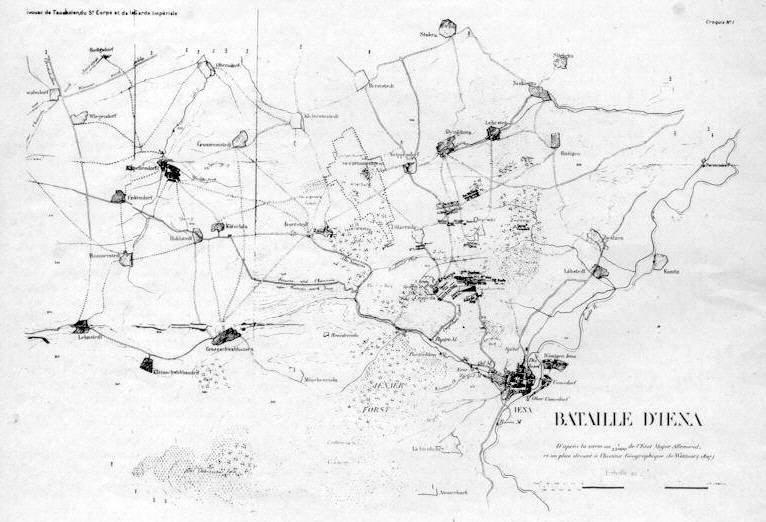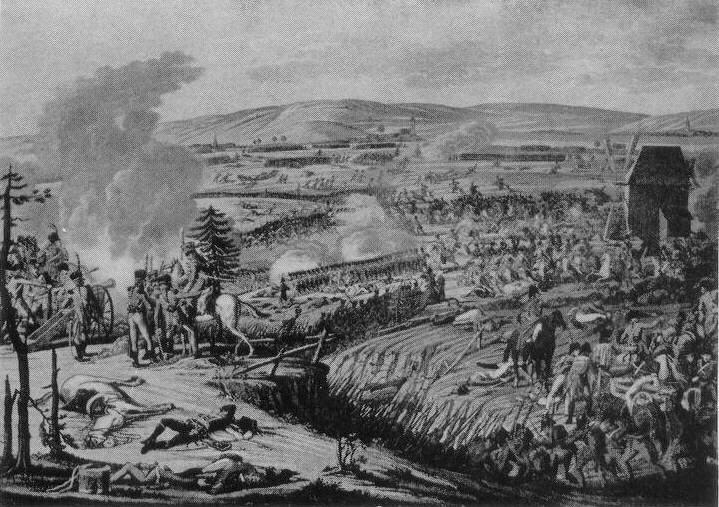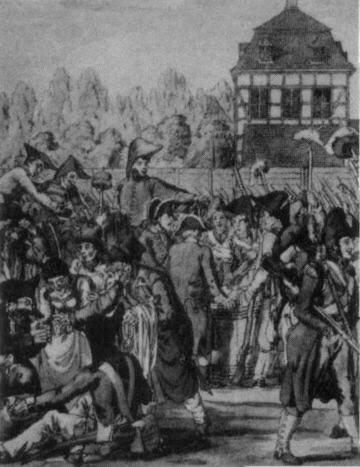
Register a SNAP EBT card with Amazon

Miniature Wargames No. 8
Virtually all of the information fed to the Napoleonic wargamer in the English-speaking world comes from a rather limited point of view, that of the historians and writers whose outlook is often clouded by their inability to read any languages other than French and English. The texts they refer to and quote as 'sources' are sometimes marred by prejudice, arrogance, national chauvinism and a singular dislike of documentary evidence and established fact. Furthermore, it is only rarely indeed that the Napoleonic wargamer gets the opportunity to see the point of view of the other three major participants - Austria, Russia and Prussia - in the wars which he strives so avidly to recreate as accurately as possible in miniature. This short series of articles is intended to make a small start towards filling that vast void of information which is unavailable to those who are unfamiliar with the German language and to provide the wargamer with reliable information on the order-of-battle of the allied army at Jena, its tactics, strategy, an account of the battle and an attempt to analyse the reasons for the allied defeat. This series of articles is based on good, reliable sources, especially the official publications of the French and German general staffs and other well researched works selected for their relative objectivity. A full bibliography will be given at the end of the series.
The dramatic victories of the French army over the much vaunted Prussian army and the triumphant march of Napoleon's Legions through Berlin, only a few weeks earlier a centre for anti-French demonstrations by Prussian warmongers, established the Empire of the 'New Franks' as the dominant power in central Europe. The welcome given to the Emperor of France and his army underlined how dramatically events had transformed the political situation. The speed with which this change had occurred cause some to think that the double battle of Jena-Auerstaedt were walk-overs for the French army. Napoleon fostered this view to promote his image of military invincibility and Bonapartist writers have promoted that view ever since. In fact, both battles were hotly contested conflicts with thousands of casualties on each side. They were not easy victories by any means, least of all for the simple soldier who suffered hunger, deprivation, horrific wounds and death as a matter of course. Neither were they one-sided battles, nor was the result a foregone conclusion. Had the allies brought their superior numbers into play at Auerstaedt, then even a general as skilful and able as Davout would surely have suffered a defeat. Likewise, at one stage of the Battle of Jena, the Prussians felt that they had victory in their grasp, but weight of numbers and better handling of the reserves on the French side eventually told. The heroism of the allied forces drifted away in the dust of the retreat, being forgotten in the panic and overshadowed by the shameful capitulations of fortresses that followed in the wake of the vigorous pursuit by the victorious French forces.
Many talk about the innate 'superiority' of the French military machine over the 'old fashioned' Prussians, about the 'revolutionary' nature of the former's tactics and how outmoded and rigid those of the latter were. Yet Pascal Bressonet, a noteworthy military historian of the French General Staff once wrote:
"The elementary tactics of the Prussian infantry did not put it, as
such, in a very pronounced situation of inferiority to the French
army. Otherwise the victory of the latter would have been much
easier, the struggle would not have lasted so long, nor would it
have caused such grievous losses." (Etudes Tactiques, pp.368).
Jena is often described as a 'Prussian' defeat, yet an analysis of the composition of the Prusso-Saxon forces at this battle shows that it was almost as much a Saxon defeat as a Prussian, although that is not to deny the fact that both contingents fought with great valour in very disfavourable circumstances.
Although standards of training and equipment were high in both the Prussian and the Saxon armed forces, the allied army at Jena had certain inherent weaknesses and faults. The individual regiments and battalions were well drilled and organised, but the higher levels of command tended to be a haphazard amalgamation of units and personnel in the sense that there were no fixed peacetime formations above the regiment. What there was were the 'Inspections', an administrative body based on a geographical area, and on mobilisation in 1806, the brigades and divisions often consisted of units drawn from several inspections. For example, Grawert's Division consisted of regiments drawn from three different inspections and it is clear that its command structure could not be familiar with the units and their officers, making the control and co-ordination of these units difficult. Some regard the creation of divisions after the French style as a great step forward, modernising the Prussian army. However, it should be pointed out that although divisions could be put together, experience in their use could not be conjured up out of thin air. Although most divisional commanders were brave and competent soldiers, they were not used to controlling such large formations. One contemporary observer, Massenbach, noted that:
"All generals are nothing more than majors with a plume on
their hats." (Massenbach's Memoirs, Vol. 3, pp.37 ff).
Added to the command problems faced by the Prussians was the fact that they were allied with the Saxons and a number of brigades and divisions contained a mixture of troops from the armies of both allies. This is where the French had their greatest tactical advantage over the allies - their divisions were led by experienced generals.
The Prusso-Saxon forces present at this battle were commanded by General the Prince of Hohenlohe, described by his adjutant as follows:
"Although 60 years old, he possessed a rare fire, was quick to
make decisions and in discussions, a good and fast horseman and
capable of withstanding physical strain. But for that, a certain
regularity of lifestyle was necessary. Were he to lack food
(which however needed to be neither good nor much), then the
fire would disappear, nature demand her rights and then the
sexagenarian could be seen." (Aus dem Nachiasse Friedrich
August Ludwigs vom der Marwitz. Vol. 2, pp.62).
These forces consisted of one corps under General Count Tauentzien, who commanded the IV Corps in 1813, the 2nd Division under Lieutenant-General von Niesemeuschel, the Saxon Cavalry, a Detachment of light troops under Colonel von Boguslawsky, the Brigade Dyherrn, the 1st Division under Lieutenant-General von Grawert, later commander of the Prussian Auxiliary Corps in Russia in 1812, the Saxon New Brigade Cerrini, the Prussian Cavalry, a Detachment under Kollin, another under Lieutenant-General von Holtzendorff positioned in Lehestein, four battalions in Capellendorf and one on its own from Erfurt. This force was later joined by the Corps under Lieutenant-General von Ruechel.

Tauentzien's Corps was initially deployed as follows:
On the right flank at Luetzeroda -
Fusilier Battalion Erichsen
Fusilier Battalion Rosen
Jaeger Company Werner
In the centre -
Regiment Zweiffel (2 battalions)
1/2 Grenadier Battalion Herwarth
1st Battalion/Infantry Regiment Friedrich August (Saxons)
1st Battalion/Infantry Regiment Rechten (Saxons)
In the second line, part of Cerrini's Brigade of Saxons -
Grenadier Battalions Thiollaz
Lecoq
Lichtenhayn
Grenade Battery Tuellmann
On the left flank at Closewitz -
Fusilier Battalion Pelet
Jaeger Company Valentini
In the second line, from Cerrini's Brigade of Saxons -
Grenadier Battalions Hundt
Metzsch
In reserve, and deployed where required was the Gettkandt Hussar Regiment (8 squads)* * * * * *
Niesemeuschel's Saxon Division, situated on the right of the allied position, consisted of two brigades, the 1st under Major-General von Burgsdorf, the 2nd under Colonel von Nehrhof.
1st Brigade consisted of:
Infantry Regiment Thuemmel (2 battalions)
2nd Battalion of Infantry Regiment Friedrich August
8pdr Battery Ernst
8pdr Battery Hausmann II
2nd Brigade consisted of:
Infantry Regiment Low (2 battalions)
Infantry Regiment Niesemeuschel (2 battalions)
2nd Battalion of Infantry Regiment Bevilaqua
l2pdr Battery Bonniot
This Division was supported by 'Zeschwitz's cavalry, each regiment being of four squadrons. The regiments were:
Kochtizky Cuirassiers
Carabineers
Polenz Chevauxlegers
Albrecht Chevauxlegers
Horse Battery Grossmann.
The right flank of this Division was covered by Boguslawsky's Detachment, consisting of:
Fusilier Battalion Boguslawsky
2 Jaeger Companies (Kronhelm, Masars)
4 squadrons of Bila Hussars
2 squadrons of Gettkandt Hussars
Brigade Dyherrn, initially placed towards the rear, later plugged the gap between the 1st and 2nd Divisions.
It consisted of:
Infantry Regiment Xavier (2 battalions, Saxons)
Infantry Regiment Churfuerst (2 battalions, Saxon)
1st Battalion, Infantry Regiment Clemens (Saxon)
2nd Battalion, Infantry Regiment Mueffling
Saxon Hussars (3 squadrons)
Howitzer Battery Kotsch (Saxon)* * * * * *
The 1st Division was deployed in front of Vierzehnheiligen and consisted of:
Grenadier Battalion Sack
Grenadier Battalion Hahn
Infantry Regiment Hohenlohe (2 battalions)
Infantry Regiment Sanitz (2 battalions)
Infantry Regiment Zastrow (2 battalions)
Infantry Regiment Grawert (2 battalions)
l2pdr Battery Glasenapp
l2pdr Battery Wolfsramsdorf
Later joined by 1st Battalion Infantry Regiment Mueffling and Cerrini's New Brigade (Saxons):
Infantry Regiment Maximilian (2 battalions)
2nd Battalion Infantry Regiment Rechten
Grenadier Battalion Winkel* * * * * *
The detachment Kollin arrived on Grawert's left flank and consisted of:
1/2 Grenadier Battalion Kollin
1 squadron Johann Chevauxlegers (Saxon)
1/2 Battery Gause* * * * * *
The centre of the Prusso-Saxon position was supported by a number of Prussian cavalry formations, namely:
Holtzendorff Cuirassiers (2 squadrons)
Prittwitz Dragoons (5 squadrons)
Henkel Cuirassiers (5 squadrons)
Krafft Dragoons (5 squadrons)
Katte Dragoons (2 squadrons)
Horse Battery Steinwehr
1/2 Horse Battery Studnitz
The left flank was secured by Hotzendorff's Detachment, consisting of:
Grenadier Battalion Borcke
Volunteer Battalion Lessel
Grenadier Battalion Losthin
Grenadier Battalion Dohna
l2pdr Battery Schulenburg
1st Battalion Schimmelpfennig Hussars (5 squadrons)
2nd Battalion Schimmelpfennig Hussars (5 squadrons)
Bila Hussars (1 squadron)
Under Major-General von Senfft:
Johann Chevauxlegers (2 squadrons, Saxons)
Clemens Chevauxlegers (4 squadrons, Saxons)
Holtzendorff Cuirassiers (4 squadrons) Horse Battery Hahn* * * * * * To the rear in Capellendorf were two battalions formerly from the Vanguard of Prince Louis Ferdinand, defeated at Saalfeld, namely:
Fusilier Battalion Ruehle
Fusilier Battalion Rabenau
On the way from Erfurt was:
2nd Battalion Infantry Regiment Clemens (Saxon)
Furthermore, there were five squadrons of Saxon Hussars in Liebstadt.
They never participated in the battle.

Battle of Jena, 14th October 1806 - the decisive action at Vierzehnheiligen
* * * * * * Approximately 37,755 men.
Total: Batts. Squads. Batteries Tauentzien 13 8 1½ 2nd Division 8 - 3 Saxon Cavalry 1 16 1 Boguslawsky 1½ 6 - Brigade Dyherrn 5 3 1 1st Division 11 - 2 Cerrini’s New Brigade 4 - - Prussian Cavalry - 19 1½ Kollin ½ 1 ½ Holtzendorff 4 21 2 In Capellendorf 2 - - From Erfurt 1 - - Total 50 74 12½

French soldiers in the suburbs of Leipzig after the battle of Jena - a meat ration is being distributed and looted items are on sale. (Contemporary picture).
On 14th October 1806, Ruechel's Corps was organised as follows:
VANGUARD:
Bailliodz Cuirassiers (5 squadrons)
Katte Dragoons (3 squadrons)
Koehler Hussars (4 squadrons)
Horse Battery Neander* * * * * *
MAIN BODY
Left Column:
Infantry Regiment Strachwitz (2 battalions)
Infantry Regiment Tschepe (2 battalions)
Fusilier Battalion Sobbe
Right Column:
Infantry Regiment Alt-Larisch (2 battalions)
Infantry Regiment Winning (2 battalions)
Infantry Regiment Wedell (2 battalions)* * * * * *
RESERVE
Left:
Infantry Regiment Schenck (2 battalions)
Koehler Hussars (1 squadron)
l2pdr Battery Schaefer
Centre:
Grenadier Battalion Borstell
Grenadier Battalion Hallmann
Right:
2nd Battalion* Treuenfels
30 Bailliodz Cuirassiers
l2pdr Battery Kirchfeld
Total: 15 2/3 battalions, 13 squadrons, 3 batteries
Furthermore:
2 battalions of Infantry Regiment Treuenfels*
Fusilier Battalion Ernst
Jaeger Company Kalkreuth
Dragoon Regiment Wobeser (5 squadrons)
1/2 Horse Battery Lehmann
Under General von Wobeser in or near Weimar.
Total: 18 battalions, 1 Jaeger company, 18 squadrons, 3 1/2 batteries
Approximately 15,260 men
Total allied strength 53,015 men.
* These battalions fought in two ranks. A new battalion was formed from the men of the 3rd rank. These battalions are therefore counted as 2/3 battalion.
The wartime strength of a Prussian battalion in 1806 was:* 1st Battalion only
Grenadier Musketeer Fusilier 18 22-23 19 Officers 56 60 48 NCO’s 1 1 - Artillery NCO 4 5 4 Surgeons 12 15 5 Drummers 1 1 8 Buglers 8 (6)* - Fifers/Oboists* 17 17 - Gunners 40 50 40 ‘Schuetzen’ 600 600 520 Privates 40 50 40 Reserves 8 10 8 Sappers
The musketeer battalions consisted of five companies each of two platoons, drawn up in three ranks. The grenadier battalions consisted of four companies, each of two platoons drawn up in three ranks. The fusilier and Jaeger battalions were also of four companies with each of the eight platoons fighting in two ranks.
The line regiments were named after their colonels-in-chief, the grenadier and fusilier battalions by their actual commanders. The Jaeger companies were usually detached and were also named after their commanders. The musketeer and grenadier companies each had ten rifle-armed skirmishers known as 'Schuetzen'. They were commanded by a selected NCO. When the entire battalion's skirmishers were deployed, they were joined by an officer and bugler. According to the Cabinet-Order of 21st July 1806, each fusilier company was to increase the number of its 'Schuetzen' to 22 men, but there is some doubt if this was universally accomplished in time for the outbreak of war.* * * * * *
The wartime strength of the Prussian cavalry regiments was as follows:
Sqn Off. NCO Trump. Privates Total Cuirassiers 5 31 75 15 720 841 Dragoons 5 31 75 15 720 841 Hussars 10 45 150 28 1320 1543 Hussar Battalion Bila 5 22 75 14 660 771
The dragoons, cuirassiers and hussars were armed with a sword, a brace of pistols and a smoothbore carbine. Each squadron had ten men (in the hussars twelve) armed with rifled carbines.
Prussian artillery batteries were organised as follows:
l2pdr battery - 6 l2pdr cannon and 2 l0pd howitzers
Horse battery - 6 6pdr cannon and 2 7pd howitzers
Reserve battery - 12 6pdr cannon
7pd howitzer battery - 8 7pd howitzers.* * * * * *
A Saxon infantry regiment consisted of ten companies, eight of musketeers, organised into two battalions, and two of grenadiers, amalgamated in wartime with those of another regiment to form a battalion.
The regimental staff consisted of 14 men. The regiment consisted of:
40 officers, 30 sergeants, 10 quartermasters, 10 surgeons, 80 corporals, 30 drummers, 20 fifers, 20 sappers, 300 grenadiers and 1,200 musketeers.* * * * * *
The Saxon carabineer, cuirassier and chevauxlegers regiments were organised into regiments of four squadrons, each of two companies. The regiments had a staff of 14, and the eight companies consisted of:
32 officers, 8 sergeants, 8 ensigns, 8 quartermasters, 8 surgeons, 40 corporals, 8 trumpeters, 8 smiths and 600 privates.
* * * * * *
The Hussar Regiment was organised into 8 squadrons with a staff of 17 men and a total of:
24 officers, 8 comets, 16 sergeants, 8 ensigns, 8 quartermasters, 8 surgeons, 80 corporals, 8 trumpeters, 8 smiths and 880 hussars.
The Saxons used eight and twelve pounder cannon in their field batteries along with four pound 'grenade pieces' and eight pound howitzers. Four pounder cannon were used by the infantry regiments.
The six batteries present at Jena were as follows:
Commander Pieces Bonniot 6 x l2pdrs, 2 x 8pd howitzers Hausmann II 6 x 8pdrs, 2 x 8pd howitzers Ernst 6 x 8pdrs, 2 x 8pd howitzers Tuellmann 6 x 4pd ‘grenade pieces’, 2 x heavy 4pdrs Kotsch 6 x 4pd ‘grenade pieces’, 2 x heavy 4pdrs Grossmann (horse) 6 x heavy 4pdrs
Part 2 will cover the tactics used by the allied armies.

Napoleon's triumphant entry into Berlin, 27th October 1806.
Part II
Tactics of the Prussian and Saxon
Armies in the 1806 CampaignPart III
The Prusso-Saxon Army at the Battle of Jena
14th. October 1806